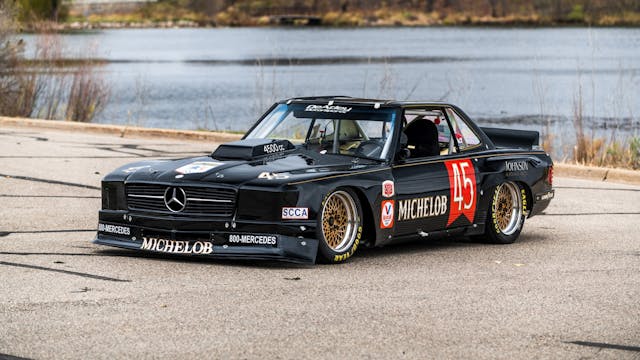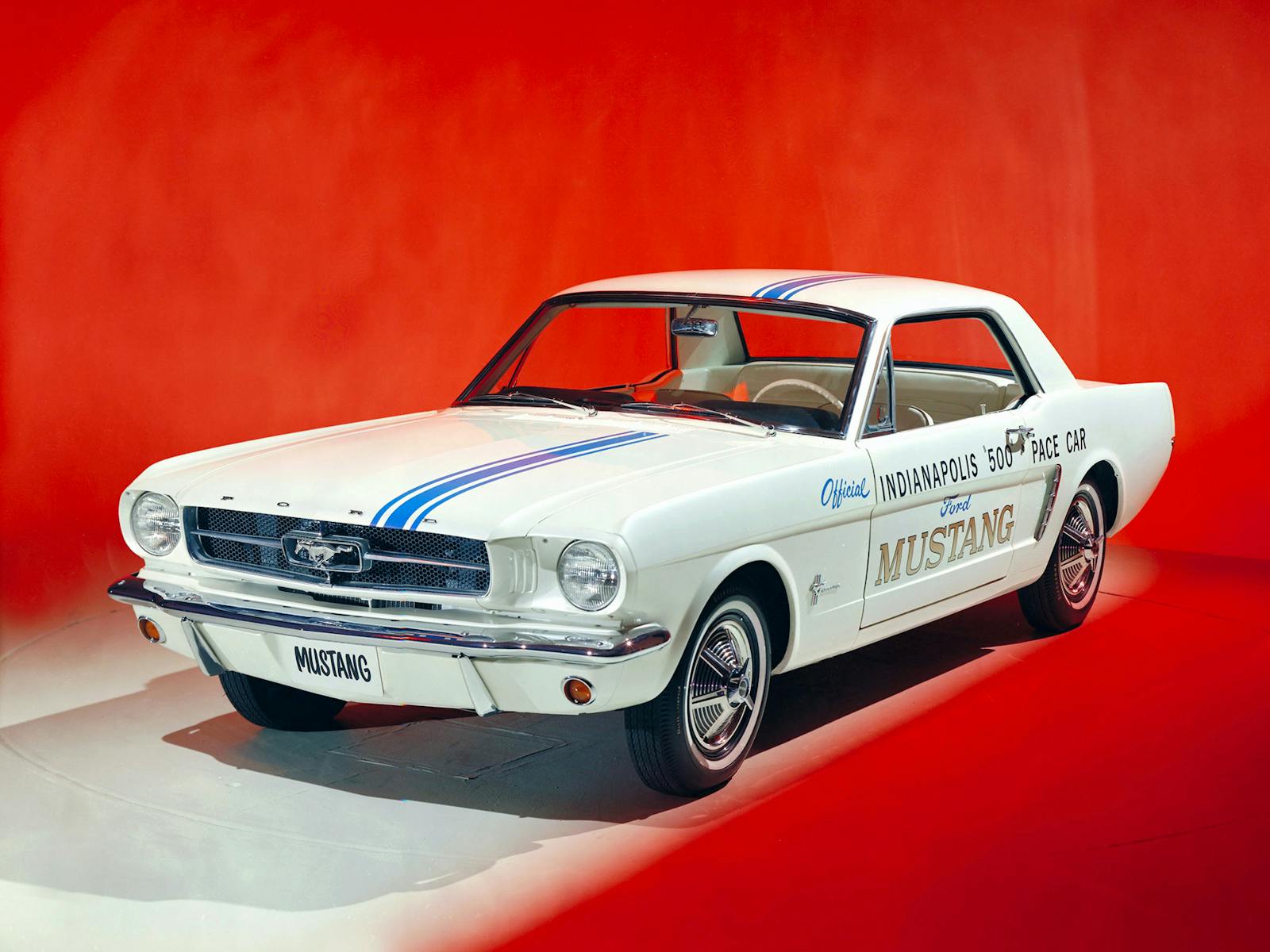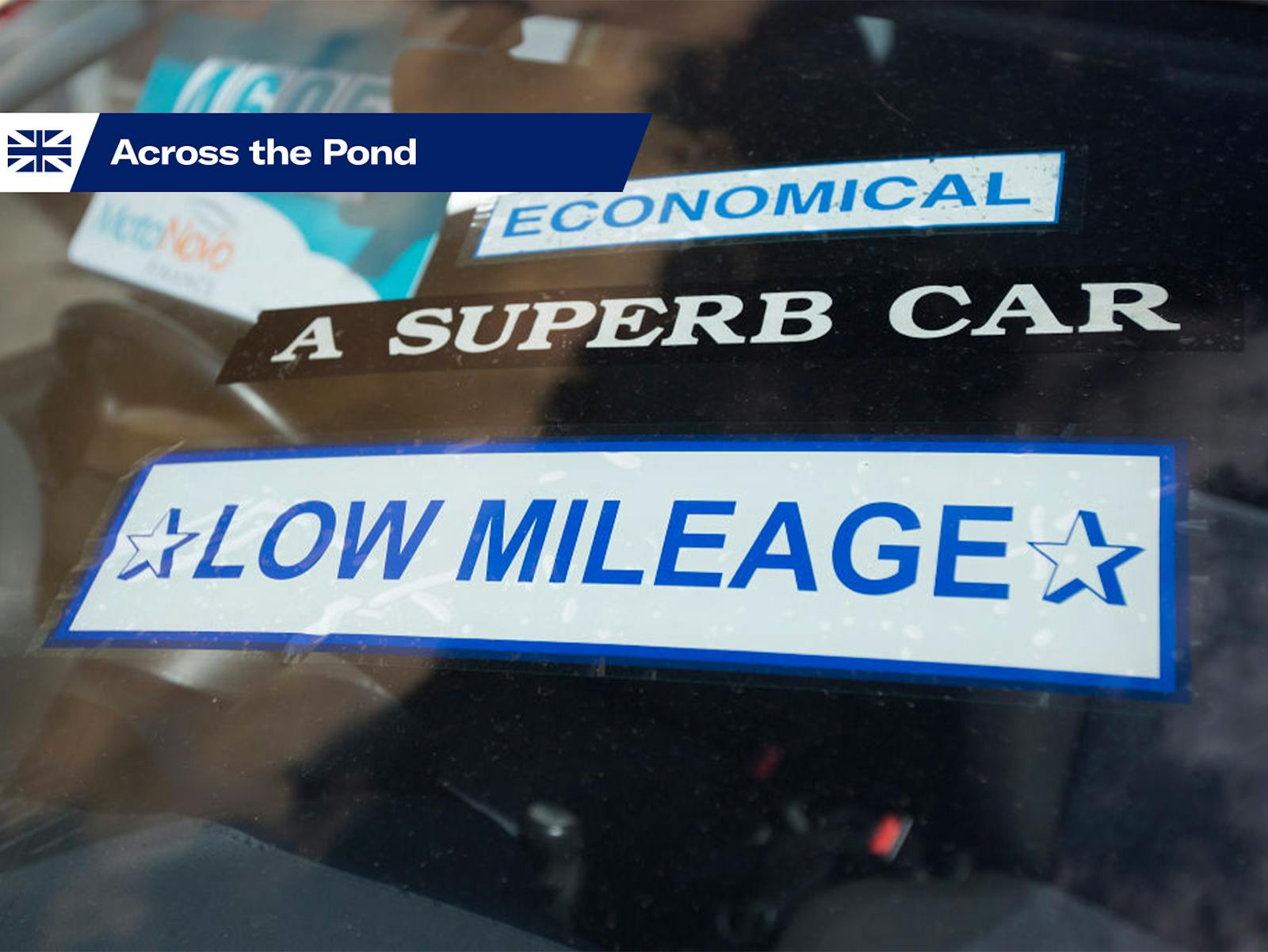11 can’t-miss automotive oddballs in search of new homes
January is by far the busiest month on the auction calendar, with Mecum’s gargantuan 10-day sale in Kissimmee, Florida, followed closely by the flurry of auctions in Scottsdale, Arizona. Of course, there will be more Mustangs, Mopars, Camaros, and Corvettes than you can shake a stick at, plus plenty of European performance cars thrown into the mix.
We’re keeping an eye on all of them. And with automotive offerings that number in the thousands, there are also plenty of rides that are rare, unusual, or downright weird. We love quirky cars, so here are 11 of the oddest ones up for grabs at auction this month.
1964 “Drag-U-La” Coffin Dragster
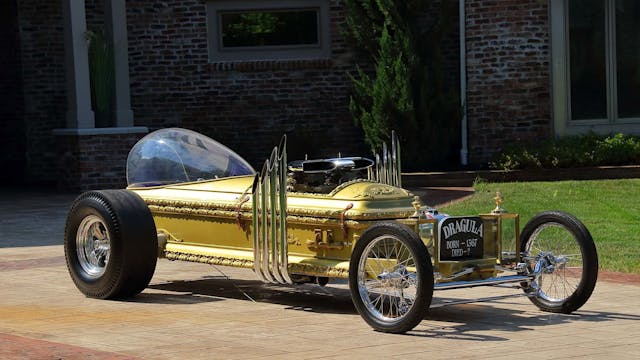
Mecum Kissimmee
Estimate: $50,000–$75,000
Remember The Munsters? The show was canceled 56 years ago, but it’s a hard program to forget, and most of us have at least seen a rerun or two. Even people who don’t care about cars whatsoever might recognize Drag-U-La and the Munster Koach, two wild custom cars built up by George Barris for the spooky sitcom.
Legend has it that Drag-U-La’s fiberglass body was built up from a coffin, but since it was illegal in California to buy a coffin without a death certificate, Barris’ project engineer had to pay for one in cash, then pick it up from behind a North Hollywood funeral home at night. The body was then painted in gold flake paint, and underneath it was a 350-hp 289-cubic-inch Mustang V-8. Four organ pipes on each side served as the exhaust, and lighting was by old glass headlamps with candlesticks for lights. Instead of a grille, there’s a marble gravestone that reads “Born 1367, Died ?”
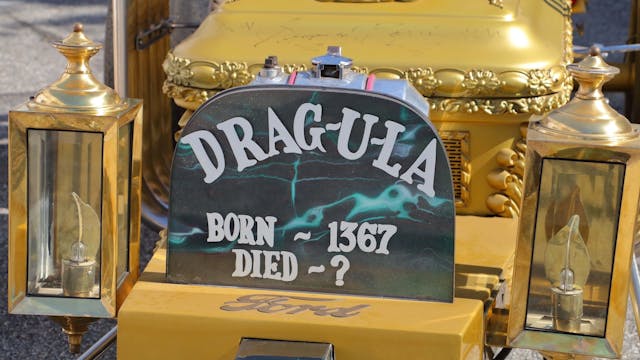
In the 1965 episode “Hot Rod Herman,” Herman Munster loses the Munster Koach in a pink slip drag race, and Grandpa decides to build Drag-U-La in order to win back the family car. When Grandpa first pulls it out of the garage, an impressed Herman declares “Detroit could take a lesson from this design.” Grandpa wins the race with ease, but is only able to bring Drag-U-La to a stop thanks to friction from Herman’s big feet.
This Drag-U-La isn’t the original coffin-bodied dragster used in the show, but it is one of the cars built by George Barris and Dick Dean in period to promote The Munsters. According to Mecum it is the last of five original Drag-U-Las built, and it has a $50,000–$70,000 estimate. George Barris fans might also be interested in his wild jet-powered, three-wheeled dragster that’s for sale at the same auction.
2002 Chevrolet Corvette Avelate Coupe

Mecum Kissimmee
Estimate: N/A
For better or worse, there have always been ways to make your Corvette stand out. In the early 2000s, one of them was to give your C5 the Avelate treatment. Built by a company called Avelate Automotive, the custom body is a sort of greatest hits smorgasbord of Corvette styling cues.
There are side scallops like a C1, a pointed rear like a C2, and a long C3-like nose, which don’t exactly go together in perfect harmony. But for someone who wants to distinguish themselves from the other Corvettes on the road: mission accomplished. Unfortunately, the Avelate package added about $100,000 on top of the roughly $42,000 base price of a regular 2002 C5 Coupe, so it’s no surprise that few people whipped out their checkbook for one. Just 27 were built, according to Mecum, and this is one of 11 that got the split-window treatment.
1959 Devin C

RM Sotheby’s Arizona
Estimate: $70,000–$90,000
It has an air-cooled flat-six mounted out back and a racy history, but this is no Porsche. It’s a Devin C, one of just 21 built, according to RM Sotheby’s.
California car dealer Bill Devin made a name for himself producing fiberglass body kits for sports cars and for building racers of his own design, powered by everything from Panhard twins to small-block V-8s. One of his designs, the Devin D, utilized a Devin chassis and body combined with parts and powertrains from Porsche or VW. When Chevrolet launched the Corvair, Devin modified the D chassis to accommodate Chevy power, added Corvair rear suspension and brakes, and called it the Devin C (for “Corvair”).
This example is reportedly the first Devin C built, and upon completion it was loaned to the Granatelli brothers who were testing superchargers at the Bonneville Salt Flats. Bad weather prevented a record, but the blown Devin set an unofficial top speed over 165 mph. The car then set several sports car records at California drag strips during 1961, running a 12.44-second quarter-mile at 109.75 mph, and then with the supercharger removed raced at the 1961 Los Angeles Time-Mirror Grand Prix at Riverside. It was also featured in a period article in Sports Car Graphic.
1999 Oldsmobile Intrigue
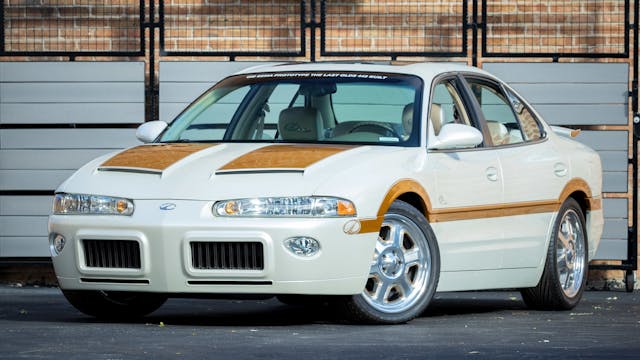
Mecum Kissimmee
Estimate: N/A
Nobody was, ahem, intrigued by Oldsmobile in the late ’90s. The oldest surviving American car brand was in its last and worst days selling bland, forgettable cars like the Intrigue and the Alero. GM announced in 2000 its plans to axe the Olds brand, and by 2004 it was gone.
One strange and uncharacteristically bold move from Oldsmobile’s later days is this SEMA show car, a clear nod to the 4-4-2s from back in Olds’ old days. The Pearl White/Gold paint, ram air hood and rear wing look straight from a classic Hurst/Olds and the aluminum wheels are one-offs, reportedly inspired by the SSIIs of the muscle car years. Under the hood, meanwhile, is a a Cadillac Northstar V-8 tuned to 500 hp. Being an Intrigue, though, all those ponies still go to the front wheels. Imagine the torque steer!
1964 Apollo 5000GT
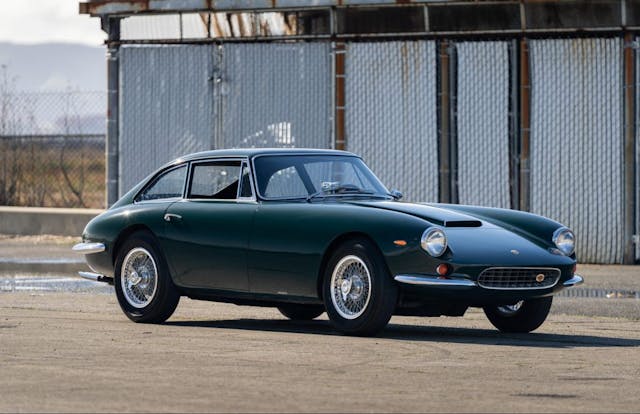
Bonhams Scottsdale
Estimate: $175,000–$225,000
The Apollo featured bodywork by Intermeccanica in Italy and an engine from Buick, and it was assembled in Oakland, California. It looked like a Ferrari and went like one, too, but like many upstart sports cars it proved too expensive to build and also make a profit. The company’s assets were sold off in 1965 and a few more cars were completed, albeit sold as Vetta Venturas.
The first Apollo was the 3500 GT, powered by Buick’s lightweight 3.5-liter V-8. The later 5000 GT was essentially the same car but used Buick’s new iron-block, aluminum-head 5.0-liter unit. According to Bonhams, this one is the second-to-last of the 76 total Apollos built, was owned in the 2000s by Apollo founder Milt Brown, has done just 4000 miles from new, and remains largely original. For reference, this same example was a $130,000 no-sale on Bring a Trailer last year.
1977 Chevrolet Corvette Martel Continental Coupe
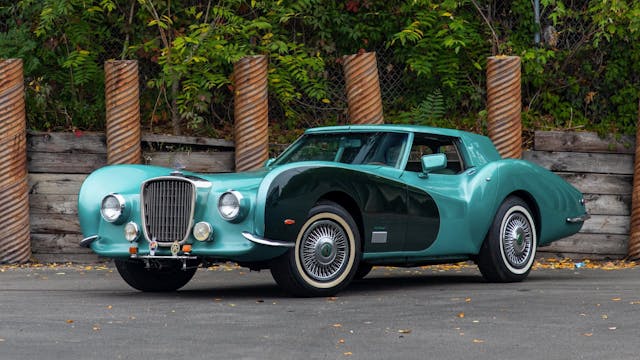
Mecum Kissimmee
Estimate: N/A
GM sold more than 49,000 Corvettes in 1977, but none of them look like this. If an old Bentley and a C3 Corvette had a love child, it might look something like this “Martel Continental” with its sweeping fenders, circular headlights, big grille, spare wheel cover out back, and wood-laden interior.
The gussied up Vette is likely the creation of Gerry Martel, a Massachusetts appraiser, restorer, and all-around car guy. “Gerry was a character with a capital ‘C,’” says Dave Kinney, publisher of the Hagerty Price Guide. “He was one of those rare people who actually put his ideas into action. When he had an idea about creating a fun old car, he would actually follow through and build it.” Martel was also involved with the “Ford Royce,” a ’70s Ford station wagon with a customized front end, Rolls-Royce grille and taillights, and a nicer interior. We can’t find much more on this Corvette, however. All we know is that it’s odd. Very odd.
2002 Smart Crossblade

Mecum Kissimmee
Estimate: N/A
“Crossblade” sounds like the name of an off-brand athletic shoe, and from a distance this car does almost look like a stubby piece of footwear. In fact, the Smart Crossblade is a factory-built open version of the Smart Fortwo. Produced in a limited 2000-unit run, the Crossblade is even less practical than a regular Smart car, and it looks even more terrifying to pilot on an American highway.
With no roof or doors, plus a tiny windscreen, it’s a bit like an Ariel Atom, if an Ariel Atom packed a city-friendly 60-hp three-cylinder. Smart never sold the Crossblade in the U.S. (Smart didn’t officially sell any cars in the U.S. until 2008), so it’s unclear what this one is doing here or if it is road legal. Perhaps that’s why it shows just 1408 km (875 miles).
1982 Mercedes-Benz SL Trans Am race car
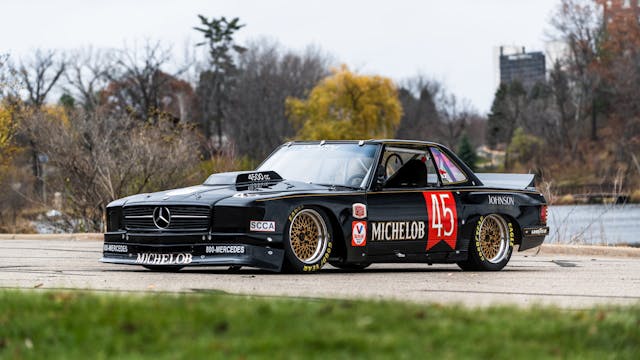
Mecum Kissimmee
Estimate: $450,000–$475,000
450SLs aren’t rare or unusual, but this one is. Even though SL stands for “Sport Light,” the R107-generation SLs built from 1971 to ’89 aren’t particularly sporty, nor are they light in weight. Their natural habitat is a Sunday cruise down the PCH, not a pro-level sports car race. That didn’t stop Mercedes dealer Neil DeAtley from trying one out on track in the 1982 SCCA Trans-Am series.
In turning the cruiser into a competitor, he used a 5.0-liter engine from a Euro-spec SL but destroked it to 4.5 liters to comply with the Trans Am regulations. Engines in the series also had to be carbureted, so the Bosch fuel injection was ditched in favor of a pair of Holley carbs. Add in the tube chassis and fiberglass wide body and there wasn’t much Mercedes left. Despite its best efforts, though, DeAtley Motorsport could only manage a sixth-place finish with its ’roided up SL.
1988 Cizeta-Moroder V16T
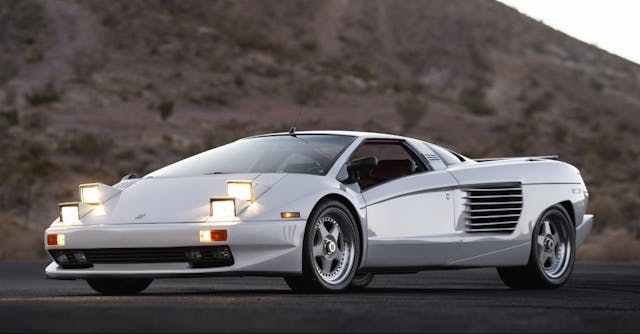
RM Sotheby’s Arizona
Estimate: $900,000–$1,200,000
The late ’80s was a wild time for exotic cars, and one of the wildest products of that era has to be the Cizeta. Founded by former Lamborghini engineer Claudio Zampolli, Cizeta also got funding from fellow Italian and music producer Giorgio Moroder, aka the “Father of Disco.” Zampolli’s dream supercar featured a tubular spaceframe chassis and a transversely mounted 6.0-liter V-16 engine similar to two Lamborghini V-8s stuck together.
Styling was by another Lamborghini alum, Marcello Gandini, with shades of Ferrari Testarossa on the sides and Lamborghini Diablo up front. And whereas two pop-up headlights are cool enough, the Cizeta has four.
Moroder pulled out the partnership early on and only a handful of Cizetas were ever completed, but he held onto this prototype that made the rounds at the Los Angeles and Geneva Motor Shows. It’s the only car badged as a Cizeta-Moroder, and it has a few differences from the later production versions like larger side vents with an extra strake and a different dashboard, console, door panels, and steering wheel. Moroder kept the car in storage, but more recently it received a full mechanical restoration at Canepa Design in 2018. The last Cizeta to sell at auction brought $665,000 a year ago.
1969 Chevrolet Camaro RS/SS “Cutaway”

Barrett-Jackson Scottsdale
Estimate: N/A
There’s nothing particularly odd about a 1969 Camaro, but this one warrants a closer look. It’s one of two known “cutaway” promotional display cars used by Chevrolet in 1968 to promote the upcoming, restyled 1969 version of its pony car.
This “cutaway” Camaro actually has two front ends, one from a six-cylinder base Camaro and one from an RS/SS model with its 350 V-8. Driven by an electric motor and complete with see-through panels in strategic areas, the display engines rotate so onlookers can see how exactly the powertrain works. Show spectators can also get a clear view of the interior, since there are no doors. Something this out-there would be a centerpiece to any Camaro-crazy garage.
1984 Laser 917
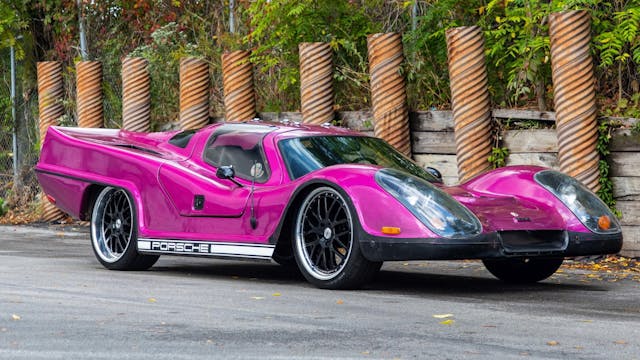
Mecum Kissimmee
Estimate: N/A
A real 917 with a good race history can be an eight-figure enterprise, making it one of the most valuable cars Porsche ever built, and any 917 would be a star at any car gathering anywhere in the world.
A Laser 917 isn’t any of those things, and even though this pink one is titled as a 1984 Porsche, it’s not fooling anybody. Like many of the wackiest-looking fiberglass contraptions of the ’70s and ’80s, it’s simply a kit car based on a Volkswagen Beetle.
Built by a company called Elite Enterprises in Minnesota, the Laser kit looked like an unlicensed toy version of a Porsche 917 that got blown up to actual size. Period ads proclaimed “It’s wild, it’s exotic, it’s unique.” Well, sure, and a Laser makes a somewhat convincing appearance in the 1977 film Herbie Goes to Monte Carlo. There are Lasers out there with Corvair or proper Porsche power, but this one is reportedly all 1970 Beetle underneath. It sold in Indy two years ago for $22,000.
Whether you’re attending Arizona Auction Week or just want to stay close to the action from afar, we’ve got you covered—from auction results to analysis and everything in between. Sign up for our Insider recap from Arizona Auction Week here.
